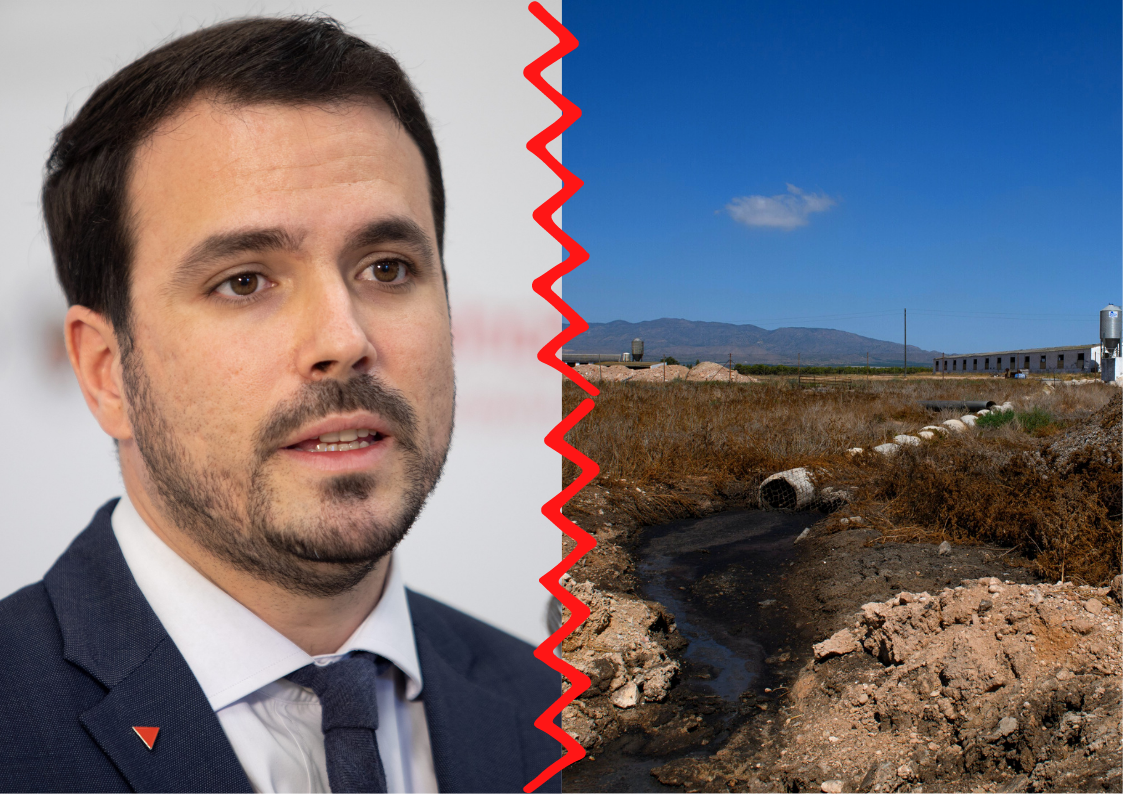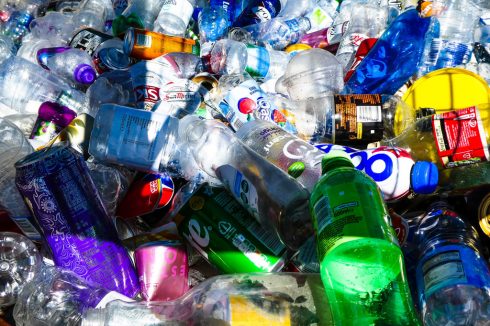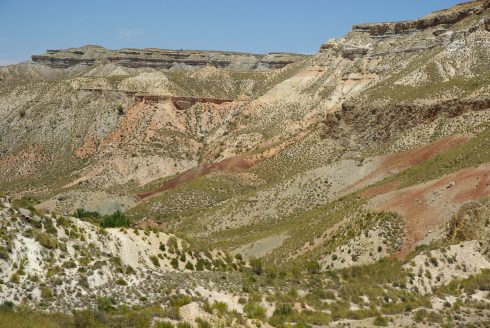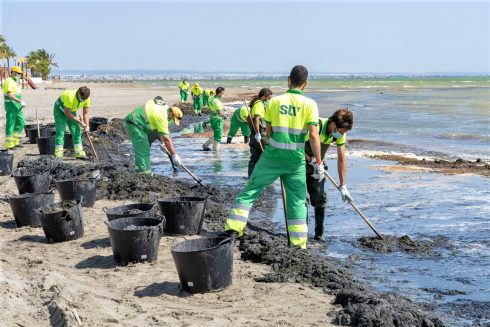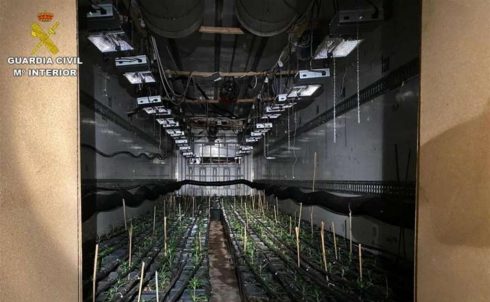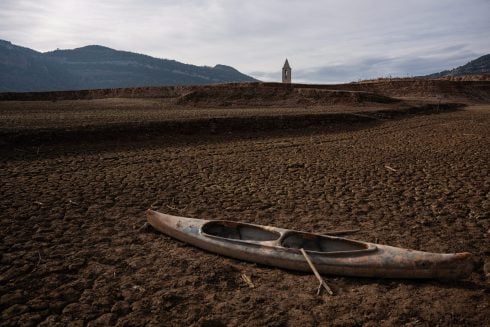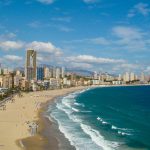SUSTAINABLE meat production is dominating headlines after Spain’s minister for consumer affairs claimed livestock mega farms are causing the ‘end’ of the very country.
Alberto Garzon, coordinator for the leftwing United Left (Izquierda Unida) party, broke ranks with colleagues in Spain’s ruling coalition to claim sky-rocketing meat production was polluting soils and water and causing desertification.
Leader of Spain’s Popular Party Pablo Casado called the remarks ‘unacceptable’, while the government’s spokesperson called Garzon’s remarks ‘personal opinion’ and the president of the Basque Country’s veterinary association called for Garzon’s immediate resignation.
The Ciudadanos opposition party meanwhile said ‘in a single paragraph’ Garzon had caused ‘irremediable damage’ to the Spanish livestock industry and profitable export market.
Yesterday Garzon doubled down on his remarks in a national radio interview to say his remarks were far from personal.

“What I said, I said as the minister of consumer affairs. I’m not saying anything new; I’m relaying what the scientists are saying,” Garzon told Cadena Ser.
It comes after Garzon’s explosive remarks in a Guardian interview on Boxing Day where he attacked mega farms springing up in ‘depopulated’ parts of Spain, claiming the meat industry was both ‘taboo’ and a ‘very serious problem’ for the country.
He said the livestock industry was causing a triple crisis of biodiversity loss, pollution and climate change.
“It would be the end for a country like Spain. Desertification is a very serious problem for our country, not least because it depends so much on tourism. Visiting a desert isn’t quite as attractive as visiting the Costa del Sol,” he said.
“Traditional farming is an environmentally sustainable and one that has a lot of history in parts of Spain such as Asturias, parts of Castilla Leon, Andalucia and Extremadura”
“That is sustainable; what isn’t at all sustainable is these so-called mega farms [where] they find a village in a depopulated part of Spain and put in 4000 or 5000 or 10000 head of cattle. They pollute the soil, they pollute the water and then they export this poor quality meat from these ill-treated animals.”
READ ALSO:
But is the minister right to claim Spain’s meat industry is threatening the nation’s soil and water, and what traditional forms of livestock farming could we be eating instead?
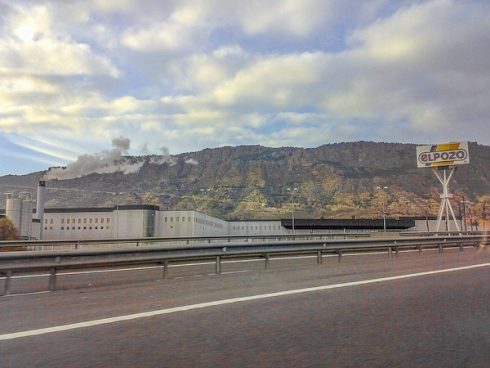
Spain – the world’s largest exporter of pork
Between 2016-2020 Spain shot into the world’s top five exporters of meat products and saw the greatest increase in value – a whopping 21% – among the four other countries in the top five.
According to the International Trade Centre (ITC), pork was the major player in Spain’s skyrocketing exports as the country generated the most value in pork products of any world nation in 2020.
As Garzon said in his explosive interviews, the majority of these exports went to China (37.1%) after outbreaks of African swine fever decimated the country’s internal production in recent years.
Rather than selling Spain’s famous cured jamon and spiced chorizo, however, Spain made an eye-watering €4.6 billion in fresh or frozen pork meat sales.
This was trailed by €721 million sales of offal, €550 million of fresh beef and €492 million of cured or salted pork – of which around only €120million was for Spain’s world-famous jamon.
According to figures from the Spanish government, in 2021 the country’s livestock farms were home to 32 million pigs, 15 million sheep and goats and 7 million cows.
According to Greenpeace, 93% of those 32 million pigs lived in mega farms where – as Garzon stated – the animals live in concentrations often well over 10,000 to one farm.
Around 66% of Spain’s entire cultivated areas are exclusively for the production of food to feed the monumental Spanish livestock industry.
Consequentially, the livestock industry as a whole consumes the same amount of water in one year as Spanish households consume in 21 years – some 48 million m3 of water.
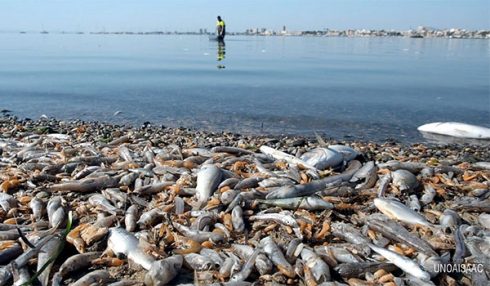
The EU takes Spain to court over nitrate pollution
The EU commission announced last month (December 2) that is was taking Spain before the EU’s Courts of Justice over ‘poor application’ of directives on nitrate pollution.
The quoted directives are part of the European Green Deal that aims to reduce contamination to zero within member states.
Warnings first arrived back in 2018 over Spain’s failure to control nitrate pollution in waterways and marine environments, where eutrophication can cause algal blooms and mass fish die offs.
Spain’s own government has linked nitrate pollution to cyanosis in humans, which causes skin and lips to turn blue from oxygen depletion, as well as gastric cancer.
But the EU claimed Spain nevertheless has not cleaned up seven autonomous communities with significant nitrate pollution: Castilla y Leon, Extremadura, Galicia, Balearic Islands, Canary Islands, Madrid and the Valencian Community.
The commission also said four regions had inadequate measures to control nitrate pollution: Aragon, Castilla–La Mancha, Castilla y Leon and Murcia.
Nitrate pollution typically has two sources, either directly from livestock farms or from agricultural fertilisers derived from livestock waste.
Part of the EU’s urgency to take Spain to court follows the mass fish die-offs in Murcia’s Mar Menor region, where 5 tonnes of fish rotted on the touristic shores of one of Europe’s largest saltwater lagoons in August 2021.
The Murcia government immediately banned the use of fertilisers within 1.5km of the lagoon, though studies from Spain’s central government have claimed the approximately 450 pig farms in the Mar Menor catchment are also to blame.
Inspections to 10% of these pig farms in 2019 found 90% broke regulations on the olympic swimming-pool sized slurry pits where pig faeces decompose in the open air.
The report found the pits were not ‘waterproof’ and leached nitrates into waterways, groundwater and into the Mar Menor.
Nitrate pollution and Spain’s megafarms
What’s striking from the EU’s press release on Spain’s impending court appearance is how the regions most affected by nitrate pollution are also the regions with the highest concentration of megafarms for pork production.
A data visualisation from Spain’s national ElDiario.com newspaper shows the location of more than 3000 of these mega pig farms, some of which house over 16,000 animals in one compound.
Catalunya is the region with the highest number of farms, followed by Aragon, Castilla y Leon, Andalucia and Murcia.
Data shows how the highest concentration of these farms is in fact right in the catchment area of the Mar Menor basin, in the Alto Guadalentin and Bajo Guadalentin regions of Murcia.
The province with the most number of mega pig farms was Huesca in northern Aragon, the region with the most nitrate pollution in all of Spain where 29.5% of the entire land area has been declared a zone vulnerable to nitrates (ZVN).
It’s not surprising that Huesca is also home to the biggest backlash against pig farms in Spain, such as in Torres del Obispo where a tiny population of 150 people found nitrates and faecal bacteria in levels unfit for human consumption in their drinking water.
“There’s no doubt about the origin of the contamination, that such high levels of faecal bacteria in such a depopulated region can only be attributed to the massive slurry pits of the industrial pork farms we suffer in this region,” wrote resident Gemma Betorz in a letter to the local mayor’s office.
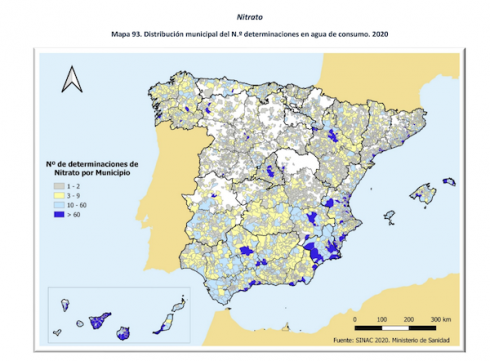
Studies from Spain’s over Ministry of Health showed that more than half of Spain’s municipalities – some 4300 populations – drank water contaminated with nitrates.
Some 101 towns had nitrate levels over 50 mg per litre, a figure set by the World Health Organisation which urges any water authority to immediately find alternate sources of drinking water.
The 101 towns in the study are a dramatic rise from just 3 towns registering such high levels in nitrates in a similar study in 2003.
Again, the community with the most alerts for nitrate pollution in water sources was Aragon with 27 – and 11 of these came from within Huesca.
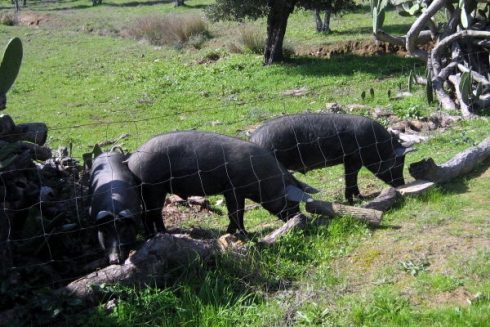
Traditional forms of pork production in Spain – Bellota Iberico
Naturally, Garzon urged Spaniards to eat less meat – quoting figures from the Spanish Agency for Food Safety and Nutrition that the average citizen eats over 1kg of meat a week, well above recommendations of between 200g-500g.
He said it was possible for Spaniards to reduce their intake and in particular buy from ‘sustainable’ forms of livestock farming.
Where pork is concerned, Spain does paradoxically have some of the most environmentally friendly forms of pig farming.
Anyone who has attempted to buy cured jamon in Spain will know that prices vary wildly, from as little as €40 for a whole cured leg of jamon serrano to the Guinness World Record-breaking €11,600 leg of jamon bellota iberico from Hueva in Castilla–La Mancha.
Far from being just a marketing ploy, Spain has strict rules that determine the naming of different hams right down to the breed of pig and their diet.
The most expensive jamón bellota iberico typically refers to Iberian pigs – a totally different and wilder breed to the cerdo blanco or ‘white pig’ most commonly seen in Spain’s mega farms.
According to producers such as Arturo Sanchez in Castilla y Leon, this type of pig lives its entire life outdoors exclusively feeding on acorns in a pasture of 2-3 hectares per pig.
This is world’s apart from the few square metres of a life lived indoors in Spain’s mega farms, and negates the need for slurry pits that contaminate the water and soil.
Spanish jamon producers do make cured jamon from intensively farmed cerdo blanco but these will carry the names jamon serrano, jamon bodega, reserva or gran reserva to distinguish them from other products.
White pigs will typically eat prepared pigmeal made largely of soy from Brazil, for which Spain is the EU’s second-largest importer after the Netherlands.
According to studies from Spain’s Ramon y Cajal hospital, Jamon bellota iberico has the second-highest amount of omega-9 healthy fatty acids only superseded by olive oil.
These fatty acids, known as oleic acids, are proven to reduce the risk of cardiovascular disease and arteriosclerosis.
Furthermore, traditional pasture grazing techniques of livestock farming reduce the consumption of water, which exacerbates desertification and climate change in many of regions popular with mega farms such as Murcia.
According to Interporc Spain, which represents the white pig sector in Spain, the intensive farming industry has been making ‘great efforts’ to protect the environment.
“In Spain, more than 90% of pig slurry is reused to replace industrial fertilisers, but it can also be treated and transformed into electrical energy,” a spokesperson said.
Interporc also has a welfare certification called IAWS that sets principles for nutrition, freedom of behaviour, diseases, castration, and the widespread practice of tail-docking to prevent pigs from eating each other’s tails in confinement.
At the time of publication, Interporc had not responded to questions concerning the leaching of nitrates into waterways in Spain’s more than 8,600 mega farms.
READ MORE:
- EU takes Spain to European Court for not stopping pollution of areas like the Mar Menor
- Big government plan to fight pollution in the Mar Menor lagoon is announced in Spain’s Murcia region
- Pig farm slurry discharges may be causing Mar Menor lagoon pollution in Spain
- Green ‘buffer zone’ could be created to fight Mar Menor lagoon pollution in Spain
- Two black flags awarded over pollution and building plans which ‘threaten’ the Costa Blanca environment in Spain

